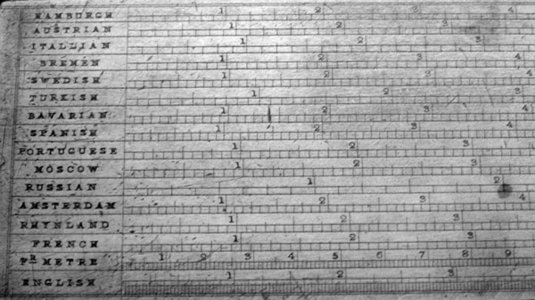- Joined
- May 27, 2016
- Messages
- 3,480
I found it on Wikimedia Commons. This inch converter is in the Museum of the History of Science in Oxford.
So OK, in the historic past, they did not manage to sync up very well. The one I find really good is to compare the Moscow Inch to the (huge) Russian Inch. Clearly Moscow folk needed more of them, or conversely, the country peasants in the rest of Russia needed their inches to go further - or they were being short-changed big-time!
I had expected better agreement within Russia!

Standards get there only with the coercive force of law, by Kings, Emperors, and Republics. In the case of metric, it was by the French Revolution. I love that there are French "Inches in there, right next to "Fr Metre", at 2.54cm to the English inch immediately below. I guess that at some stage, the "English Inch" was forced to get a bit bigger, because we know the platinum Mètre des Archives did not get any smaller!
They had lathes and machine tools everywhere well before then. Sync between nations? Maybe not so much!
[Edit The modern measured comparisons are here --> https://commons.wikimedia.org/wiki/File:Inch_converter.jpg ]
So OK, in the historic past, they did not manage to sync up very well. The one I find really good is to compare the Moscow Inch to the (huge) Russian Inch. Clearly Moscow folk needed more of them, or conversely, the country peasants in the rest of Russia needed their inches to go further - or they were being short-changed big-time!
I had expected better agreement within Russia!

Standards get there only with the coercive force of law, by Kings, Emperors, and Republics. In the case of metric, it was by the French Revolution. I love that there are French "Inches in there, right next to "Fr Metre", at 2.54cm to the English inch immediately below. I guess that at some stage, the "English Inch" was forced to get a bit bigger, because we know the platinum Mètre des Archives did not get any smaller!
They had lathes and machine tools everywhere well before then. Sync between nations? Maybe not so much!
[Edit The modern measured comparisons are here --> https://commons.wikimedia.org/wiki/File:Inch_converter.jpg ]
Last edited:


